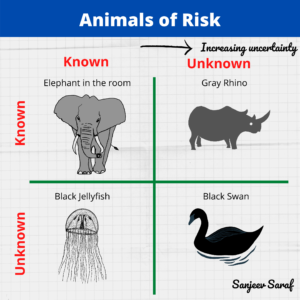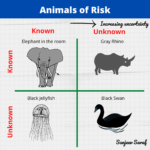A few weeks ago, I had written about a recent fire at the alkylation unit in Citgo’s Corpus refinery, and raised the question about HF usage. Today, I would like to further delve into the alternate technologies for alklyation and also take this opportunity to summarize feedback I have received from a few readers: Mike Bordeaux, Sujith Panikkar, Menno van der Hauw, and Fabienne Salimi.
No one would argue that anhydrous HF is highly toxic and an accidental release can have serious consequences. About 50-odd refineries in the United States use HF in their alkylation process. Should refineries stop using HF? Are there any options to HF? Let us try to look at the available options to reduce HF risks.
Alternative I. Modified HF
One way to minimize consequences of HF release is to use an additive that suppresses HF vaporization. This reduces fraction of HF that aerosolizes and thereby reduces the affected footprint. Studies conducted in early 90s showed a reduction of 60-100% in HF footprint. For modified HF to be an effective risk mitigation strategy, the reliability of additive system is critical.
Alternative II. H2SO4
The main concern with HF release is the large footprint that results from dispersion of HF vapors. An alternate is to use H2SO4. Please note that the Immediately Dangerous to Life and Health limit (IDLH) for H2SO4 (IDLH – 3.75 ppm) is in fact higher than for HF (IDLH – 30 ppm). An EPA report to Congress estimates that a HF release catastrophic vessel failure will result in HF IDLH concentration 6-miles downstream of the release. Unlike a HF release, if there is a H2SO4 release it will pool on ground. This helps contain H2SO4 and limit public exposure to H2SO4.
However, the introduction of H2SO4 introduces other risks.
- H2SO4 quantities required for alkylation are much higher (42 pounds H2SO4 per barrel of alkylate as opposed to 0.1 pounds HF per barrel). The increased transportation of H2SO4 and processing naturally results in a higher likelihood of an incident
- Spent H2SO4 and hydrocarbon mixture is highly flammable
- H2SO4 regeneration in a burning pit produces SOx.
In spite of the above risks, one can still intuitively think that use of H2SO will not pose the same degree of risks to public as pure HF. But how would H2SO4 risks compare to modified HF? A rigorous analysis may reveal that risks from Alternative I and II are comparable. Alternative I may have higher capital costs due to additional safety mitigation systems than H2SO4…roughly $2-5-million.
Alternative III. Solid Catalyst
An alternate to HF and H2SO4 is to use solid catalyst. This eliminates any safety or environmental concerns. Alkylation experiments using solid catalysts such as zeolites were performed in early 70s. It was found that these catalysts deactivated rapidly and this increased their usage costs. However, as was pointed to me by a couple of blog readers, Alkyclean technology (developed by ABB/ Albemarle Catalysts, Neste Oil and ABB Lummus) has been demonstrated at a prototype plant in Finland. Introducing this technology in an existing refinery amounts to recreating a new unit and therefore entails significant capital costs (approx. 50-million)
Choosing between alternatives
To choose judiciously between HF options one needs to carefully evaluate, economics, reliability of risk mitigation and local regulations.But if I had to guess, you will notice the following trend:
- Existing refineries that currently employ HF will focus on risk mitigation option to reduce HF risks (first alternative)
- Newer refineries will choose H2SO4 since it will turn out to be slightly cheaper than HF (second alternative)
It will be interesting to see who adapts solid catalyst technology for alkylation. Any comments?






3 Responses
I believe in human intelligence and think it is just matter of will to make a non-cost effective process to a cost effective one.
(NB: it will be good if move the “submit comment” button under the requested code. I most my comments many times because I submitted comment before inserting the code”.
Fabiene,
The solid acid alkylation process is improved over the last years and is now very cost effective. Replacing your HF unit for a solid acid or sulphuric acid unit will cost you approximately the same and the solid acid alkylation process itself is even better in cost than the sulphuric acid process. Another big advantage of the solid acid process is that you don’t have to shut down your alkylation unit completely during maintenance but it can still for eg 70% throughput. ABB Lummus, Albemarle and Neste has been rewarded with a “Green Award” for “Affordable green chemistry” by the American Chemical Society (see Q4 2008 edition of PTQ).
That is not true that sulfuric acid usage is 42 lb/bbl of alkylate. The acid consumption is based on the feed compositions and operating parameters.
on the average is probably less than 0.5lb/gal of alkylate. With recent CDtech technology, it can further reduce the usage of sulfuric acid from 25-50%.
Solid acid catalyst is a long way to go until it can solve the coking and catalyst regeneration,and waste disposal issues etc. Catalyst can be very expensive due to precious metal such as platinum etc.